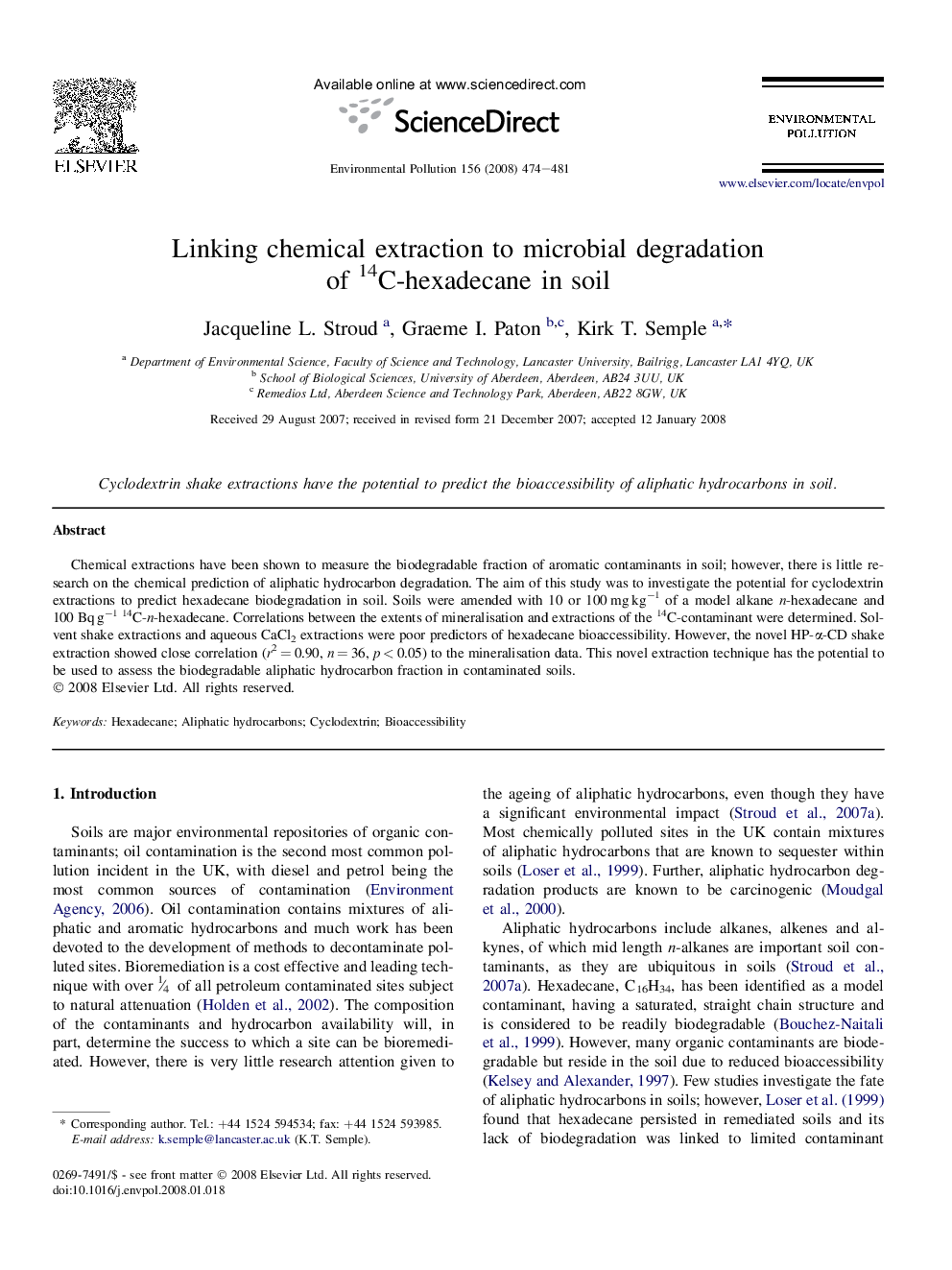| Article ID | Journal | Published Year | Pages | File Type |
|---|---|---|---|---|
| 4426425 | Environmental Pollution | 2008 | 8 Pages |
Chemical extractions have been shown to measure the biodegradable fraction of aromatic contaminants in soil; however, there is little research on the chemical prediction of aliphatic hydrocarbon degradation. The aim of this study was to investigate the potential for cyclodextrin extractions to predict hexadecane biodegradation in soil. Soils were amended with 10 or 100 mg kg−1 of a model alkane n-hexadecane and 100 Bq g−114C-n-hexadecane. Correlations between the extents of mineralisation and extractions of the 14C-contaminant were determined. Solvent shake extractions and aqueous CaCl2 extractions were poor predictors of hexadecane bioaccessibility. However, the novel HP-α-CD shake extraction showed close correlation (r2 = 0.90, n = 36, p < 0.05) to the mineralisation data. This novel extraction technique has the potential to be used to assess the biodegradable aliphatic hydrocarbon fraction in contaminated soils.
